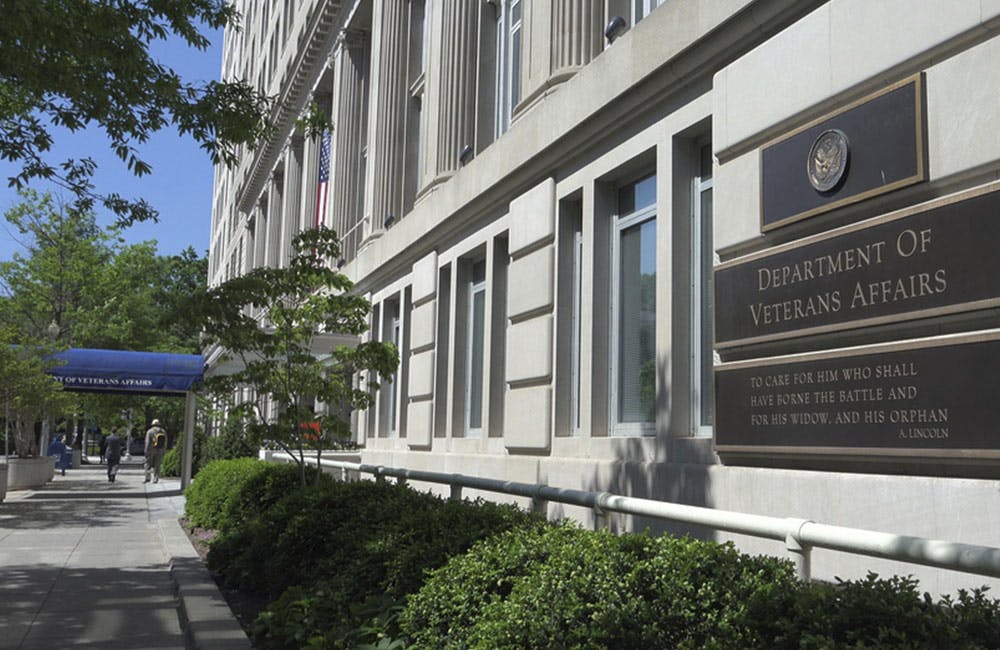Contact with the Enemy Drives Tech Innovation, Army Officials Say
U.S. Army leaders are testing technology on the battlefield to drive innovation as the service pursues its 2030 modernization goals.

The U.S. Army’s best vehicle for innovation is contact with the enemy on the battlefield, Army leaders said at Defense One’s State of Defense event.
Commercial sector innovation is introducing more technologies onto the battlefield at record pace, but the best testers of the equipment are the soldiers that use it, Gen. Randy George, Army chief of staff, said during the event.
“We’re seeing commercial tech move faster than it has and I think that that’s really the difference of what we’re seeing,” George said during the event. “There’s no one better at innovating than our soldiers. You put developers out there with our soldiers on the ground and testers, and we’re going to actually test what we’re doing out there in combat-like conditions, then we’re really going to find out what we need inside of our formation.”
Driving Rapid Deployment and Testing
George said testing technology in the field has enabled the service to quickly test tech, scrap what doesn’t work, stick with what does and iterate on it.
“We had developers that were on the ground, and we had people that own those products that can take those lessons back immediately. I think that that’s the most exciting thing, is that we’re seeing changes in weeks and months, rather than waiting years to advance,” George said.
Col. Josh Glonek, Army’s commander of the 3rd Brigade, 10th Mountain Division, said during the event that his division has been able to see the benefits of drone and satellite technology in action on the battlefield, discovering where the technology can be most effective and where it still has roadblocks.
Glonek’s brigade — deployed from the Baltics to the Black Sea — has been working to “rapidly integrate a whole variety of new emerging technologies into [their] formation,” identify gaps and prepare for the future.
Evolving Drone Warfare
Training with NATO allies, Glonek’s brigade has taken lessons learned from the Russo-Ukraine War and applied it to its evolving tactics and strategies regarding drone warfare.
“One of the biggest changes to the battlefield today is how the rapid proliferation of drones is really being coupled with indirect fires and precision strike capabilities,” Glonek said. “Rather than the traditional way of having a forward observer move across the battlefield to get eyes and identify a target and call for fire, what we’re seeing is the mass use of drones to rapidly fly around the battlefield and to get eyes on those targets and to enable a call for fire.”
Glonek said this shift in strategy has upended the modern battlefield allowing unmanned systems to find more targets accurately than human observers while keeping them out of the line of fire.
“If a human being is moving to a position to get eyes on an enemy and to call for fire, you’re putting that person at risk. But with a drone, you can do this, in fact, actually probably finding targets with a higher degree of effectiveness than you can with a manned observer,” Glonek said. “If it gets shot down, you’ve lost the machine. You haven’t lost a human life.”
Glonek said his brigade has been training with drones in their formation, integrating over 150 of them into their operations. According to Glonek, 90% of the fire missions his brigade called were observed by a drone.
“As we employ drones in our formations, we’re learning a lot about how to use them effectively and how to really make contact with unmanned sensors before we put a human being at risk. We think that that could be paramount on the future battlefield,” Glonek said.
Prepping Strategies for Future Defense
Glonek said the Army is learning lessons about the efficacy of drones in all weather conditions, and in his particular case, discovering that some drones were unable to operate in cold weather conditions like low cloud cover or freezing fog.
Satellite coverage through SpaceX’s StarShield also allows large amounts of data to be transferred quickly over great distances, but it opens the door to enemy disruptions of the electromagnetic environment on the battlefield.
“Throughout history, there’s always actions and counter actions, and that has been true throughout history,” Glonek said. “What seems to be happening today, because technology is evolving so rapidly that these cycles of action and counter action are occurring on a weekly or even a daily basis, and that probably isn’t happening anywhere faster than electronic warfare.”
Army’s next step, as the service pursues its 2030 modernization goals, is fighting under one “common operating picture” according to Glonek. He added an integrated network of sensors would improve communication and enhance decision making for commanders on and around the battlefield.
“I think the Army recognizes that we need to go to the next step even faster, and that’s the ability to integrate all these war fighting functions on the one common C2 platform,” Glonek said. “It’ll make us more survivable. We can operate more dispersed. It’s just a critical effort.”
This is a carousel with manually rotating slides. Use Next and Previous buttons to navigate or jump to a slide with the slide dots
-

White House Science Chief: US-Driven AI Sets Global Standards
Michael Kratsios outlined how American AI technology on the global stage will help standardize the tech and counter China’s influence.
5m read -

Modernizing Critical Infrastructure in the Face of Global Threats
Officials are expanding the latest strategies in boosting defense infrastructure, including securing satellite communications, upgrading enterprise-wide technology, optimizing data management.
20m watch -

Trump AI Orders Call for Speed in Building Infrastructure
The directives call for expanding AI infrastructure, streamlining federal permitting and promoting AI exports.
4m read -

DOD Accelerates Software Modernization with Agile DevSecOps Push
The Pentagon's software implementation plan tackles cultural hurdles and integrates security early to deliver critical capabilities faster.
6m read -

White House Unveils AI Action Plan to Secure Global Dominance
The strategy outlines steps to accelerate private sector innovation, build critical infrastructure and advance U.S. leadership in AI policy and security.
3m read -

VA's Platform One Powers Rapid Innovation to Bolster Digital Services
VA's Platform One accelerates software development timelines from weeks to hours, ultimately enhancing digital services for veterans.
5m read -

Opinion: Original Intelligence Is the Missing Piece for AI Transformation
Limitations of AI agents and development drive growing needs for workforce development and "original intelligence."
3m read -

Pentagon's $200M AI Contracts Signal Broader Effort to Transform Talent
The Army is leveraging Silicon Valley, reservist programs and new hiring strategies to integrate critical digital skills in its ranks.
5m read -

AI Foundations Driving Government Efficiency
Federal agencies are modernizing systems, managing risk and building trust to scale responsible AI and drive government efficiency.
43m watch -

Inside DOD’s Push to Grow the Cyber Workforce Through Academia
Diba Hadi gives her first interview since becoming principal director of the DOD’s Cyber Academic Engagement Office.
15m listen -

Agencies Tackle Infrastructure Challenges to Drive AI Adoption
Federal agencies are rethinking data strategies and IT modernization to drive mission impact and operational efficiency as new presidential directives guide next steps.
5m read Partner Content -

Generative AI Demands Federal Workforce Readiness, Officials Say
NASA and DOI outline new generative AI use cases and stress that successful AI adoption depends on strong change management.
6m read
















